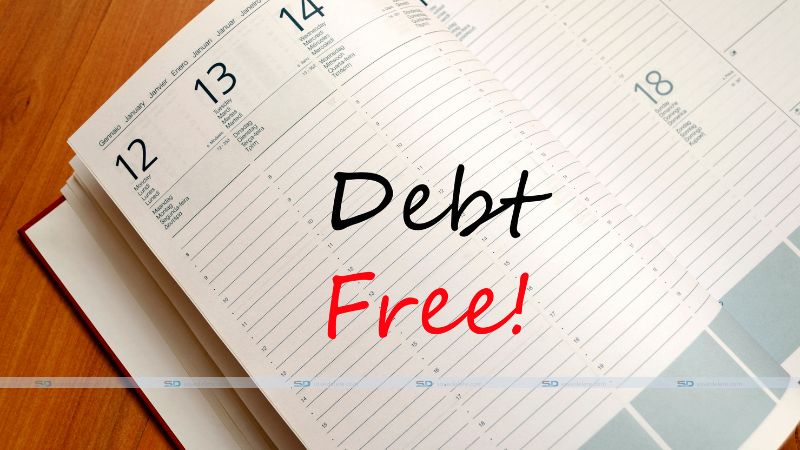Debt is a common problem for millions of people worldwide. It can be overwhelming and stressful, affecting personal and professional lives.
According to the Federal Reserve Bank of New York, Americans owe over $14 trillion in debt, with household debt being the largest contributor. Credit card debt alone stands at $820 billion. While it may seem impossible to become debt-free, there are several winning ways to achieve this goal.
In this article, we will explore different methods to become debt-free, including budgeting, debt consolidation, negotiating with creditors, and seeking professional help.
We will also delve into the benefits of being debt-free and how to maintain a debt-free lifestyle.
Creating a Budget: The First Step Towards Becoming Debt-Free
The first step towards becoming debt-free is creating a budget. A budget helps you track your expenses and income, allowing you to identify areas where you can cut back on spending. Start by creating a list of all your monthly expenses, including rent, utilities, groceries, transportation, and debt payments. Next, identify your monthly income, including your paystub or any other sources of income. Subtract your expenses from your income to determine your disposable income.
It’s essential to prioritize your debt payments in your budget. Consider allocating a higher amount towards the debt with the highest interest rate. Once you pay off that debt, you can redirect that money towards your next highest interest debt.
Debt Consolidation: Multiple Debts into One Payment
Debt consolidation is another way to become debt-free. It involves combining multiple debts into one payment, typically at a lower interest rate.
A personal loan is an unsecured loan that you can use to pay off multiple debts. Personal loans have a fixed interest rate, making it easier to plan your monthly payments. Additionally, personal loans have a set repayment term, typically ranging from 12 to 84 months, giving you a clear end date for your debt.
A balance transfer credit card involves transferring multiple debts to a new credit card with a lower interest rate. Balance transfer credit cards often come with an introductory 0% interest rate for a limited period, allowing you to pay off your debt interest-free. However, it’s essential to pay off your debt before the introductory period ends, as the interest rate can increase significantly.
Negotiating with Creditors: Lowering Your Debt Payments
Negotiating with your creditors is another way to become debt-free. Creditors may be willing to lower your interest rate or monthly payments if you’re struggling to make ends meet. Before negotiating, it’s essential to have a clear understanding of your financial situation and a plan for repayment.
When negotiating with your creditors, be honest about your situation and explain why you’re struggling to make payments. You can also ask for a lower interest rate or a payment plan that fits your budget. Some creditors may also be willing to settle your debt for less than the full amount owed. However, debt settlement can negatively affect your credit score, and it’s essential to consult with a financial advisor before pursuing this option.
Seeking Professional Help: Getting Expert Advice
If you’re struggling with debt, seeking professional help may be the best option. Financial advisors and credit counselors can provide expert advice and guidance on how to become debt-free. They can help you create a budget, negotiate with creditors, and develop a debt repayment plan.
Additionally, debt management plans (DMPs) are available through credit counseling agencies. A DMP involves consolidating your debts into one payment, typically at a lower interest rate. The credit counseling agency will negotiate with your creditors on your behalf, and you’ll make a monthly payment to the agency, who will distribute the funds to your creditors.
Benefits of Being Debt-Free: Building Wealth and Reducing Stress
Becoming debt-free has numerous benefits, including becoming wealthy and reducing stress. When you’re debt-free, you have more disposable income to save or invest. This can lead to strong financial stability and security. Additionally, being debt-free can reduce stress and anxiety, improving your overall well-being.
Maintaining a Debt-Free Lifestyle: Tips for Success
Once you’ve become debt-free, it’s essential to maintain a debt-free lifestyle. This involves creating a budget and sticking to it, avoiding unnecessary expenses, and prioritizing saving and investing.
Creating an emergency fund is also crucial to maintaining a debt-free lifestyle. An emergency fund can help cover unexpected expenses, such as medical bills or car repairs, without relying on credit cards or loans.Before making any significant purchases, consider if it’s necessary and if you can afford it without going into debt.
Conclusion: Winning Ways to Become Debt-Free
Becoming debt-free may seem daunting, but with the right strategies and mindset, it’s achievable. Creating a budget, consolidating debt, negotiating with creditors, and seeking professional help are all winning ways to become debt-free. Additionally, being debt-free has numerous benefits, including building wealth and reducing stress. To maintain a debt-free lifestyle, it’s crucial to stick to a budget, avoid unnecessary expenses, and prioritize saving and investing. With these strategies, you can become debt-free and achieve financial stability and security.
As you can see, becoming debt-free requires discipline and dedication, but the rewards are worth it. Now, we want to hear from you. Do you think becoming debt-free is worth the effort, or is it better to take on debt to achieve your goals?
